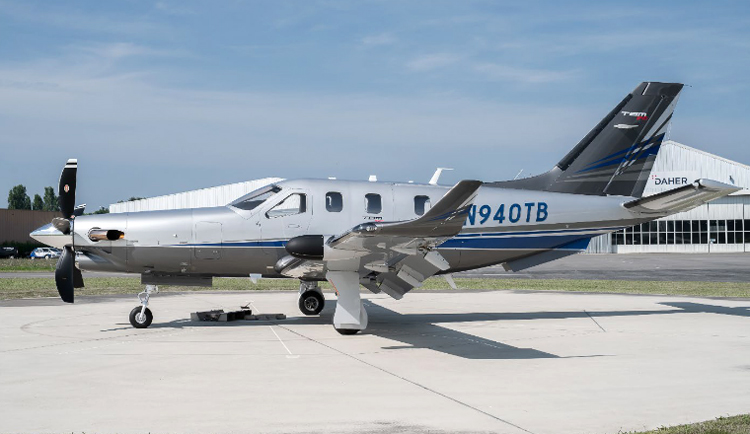Daherís TBM turboprop-powered aircraft at EBACE 2022, the European Business Aviation show in Geneva

After 2 years of interruption EBACE welcomes Daherís single-engine turboprop product line with the participation of a TBM 900-series aircraft.
During this weekís European Business Aviation Convention and Exhbition (EBACE), Geneva airport static display area (SD 18) features the very fast, pressurized TBM 940 Ė which is the best-selling TBM version to date.
ďWeíre pleased to be at EBACE, where we didnít have the opportunity to showcase the TBM 940 because of the COVID pandemic, to explain its outstanding features in terms of safety with the game-changing HomeSafe™ and the TBM e-copilot®, key features for business aviation.Ē commented Nicolas Chabbert, the Senior Vice President of Daherís Aircraft Division. ďMore than ever, our family of single-engine turboprop aircraft offers high levels of operating efficiency and enhanced aviation sustainability for business aviation in Europe and beyond.Ē
The TBM 940 has been the high-end version of Daherís TBM series its launch in 2019, with 126 sold and delivered during the past three years. It is now succeeded by the recently-unveiled TBM 960, which incorporates the Garmin G3000® integrated flight deck and e-copilot® functionality of its predecessor, along with the game-changing HomeSafe™ emergency autoland system.
Enhancements for the TBM 960 are focused on the application of digital power for its propulsion system and comfort in the cabin. The TBM 960 introduces Pratt & Whitney Canadaís new PT6E-66XT with the Hartzell Propeller five-blade Raptor™ composite propeller and hub, which are linked with the dual-channel digital Engine and Propeller Electronic Control System (EPECS).
Daherís turboprop aircraft at EBACE 2022
They bring FADEC-type functionality to the TBM category of airplanes, with a fully automated engine startup after single-switch activation. The cockpitís power lever becomes an e-throttle Ė using a single forward position from takeoff to landing. The EPECS optimizes powerplant performance throughout the flight envelope while reducing pilot workload by integrating all functions and protecting the engineís life.
On the comfort side, the TBM 960ís Prestige cabin extends Daherís use of digital power into the aircraft, featuring an all-new environmental control system produced by Enviro Systems Inc, along with LED ambience lighting integrated into both sides of the overhead ceiling panel, and electronically-dimmable windows Ė all controlled by a Passenger Comfort Display (PCD). Enhancements in the cabinís style and comfort also include new ergonomically enhanced seats, USB-A and USB-C power plugs, individual cupholders, and headset hangers for each occupant.
Retaining the performance of Daherís TBM 900 series airplanes, the TBM 960ís digital control enables pilots to fly with more precise settings. For improved aviation sustainability, the fuel consumption is only 57 U.S. gallons per hour at Daherís recommended cruise speed of 308 kts. Ė which is a 10% fuel economy compared to the maximum cruise setting.
The TBM 960 has been certified by EASA (the European Union Aviation Safety Agency); with certification by the U.S. FAA (Federal Aviation Administration) currently in progress. First deliveries to European customers are expected this month.
For the Kodiak product line, the Kodiak 100 is now produced as the Kodiak 100 Series III, which is the latest version developed since the Daher Group acquired this sport and utility aircraft product line in 2019. The unpressurized 8-10-seat Kodiak 100 Series III is equipped with Garminís G1000 NXi avionics, and is designed for operation on uneven and unimproved runways, or on water in the amphibious version. Its unique combination of robust construction and remarkable 1,650 kg. (3,530 lb.) useful load has resulted in many applications for the Kodiak, including special missions, MEDEVAC, as a skydiving platform and more.
The Kodiak 100 Series III incorporates features for improved flight safety, greater cabin comfort, and augmented operational capabilities, as well as upgraded quality and more comprehensive maintenance coverage. All new-production Kodiak aircraft are being built in the Kodiak 100 Series III configuration.
As of January 1, 2022, a total of 300 Kodiak and 1,070 TBM aircraft had been delivered to international owners and operators, with the global fleet accumulating some 2.2 million flight hours.





